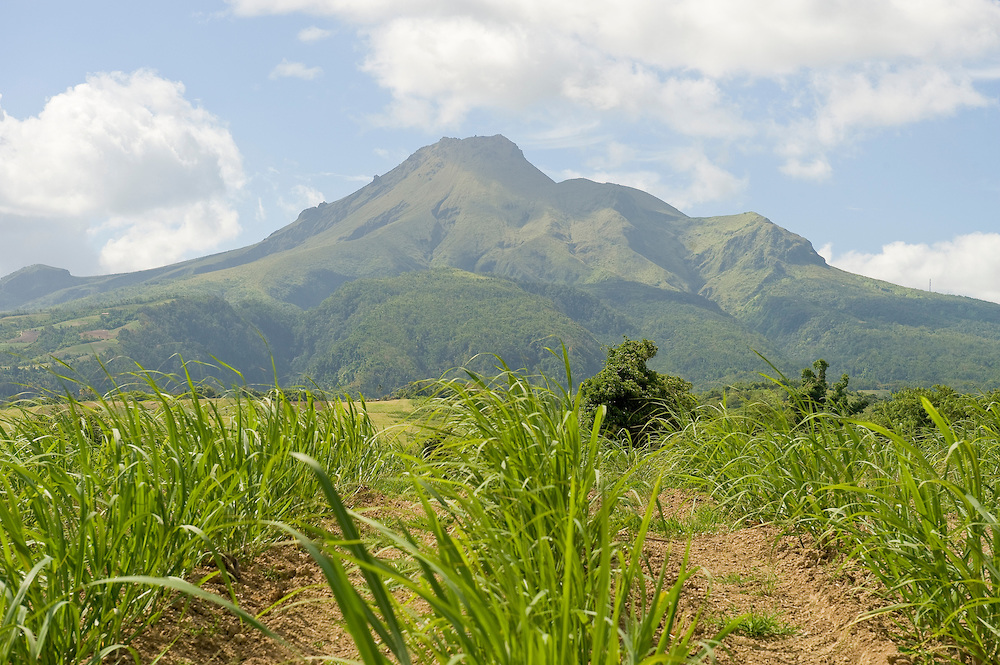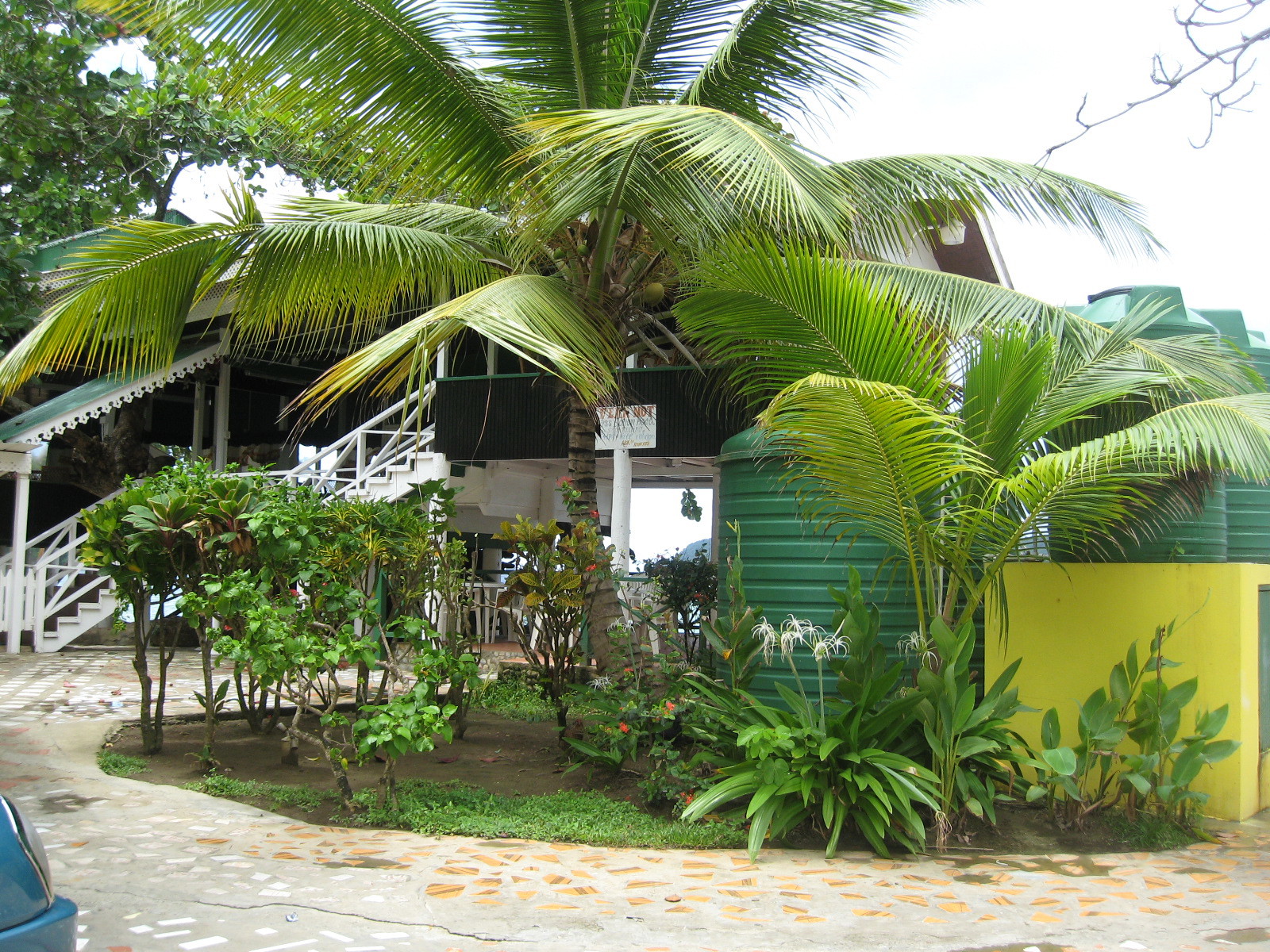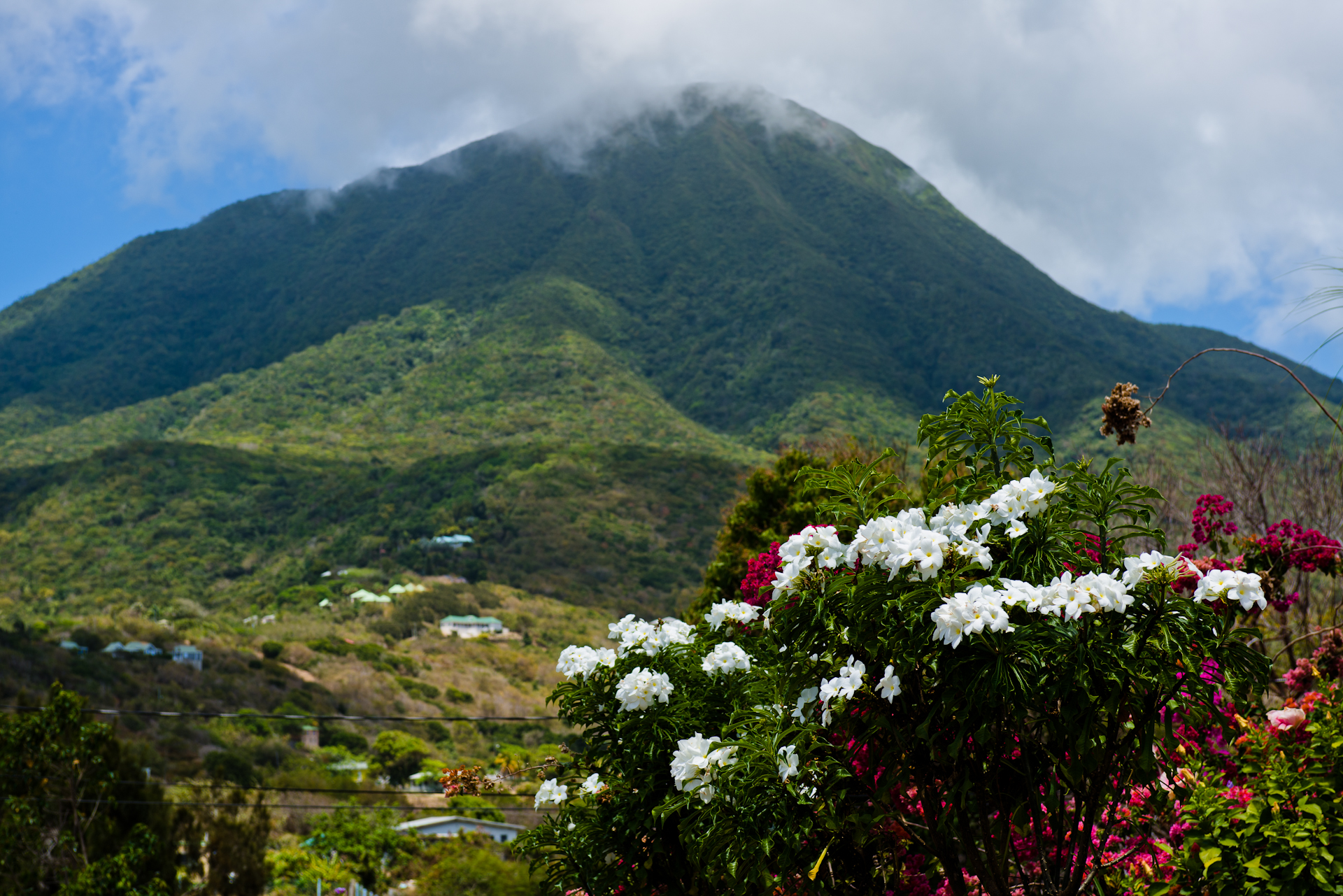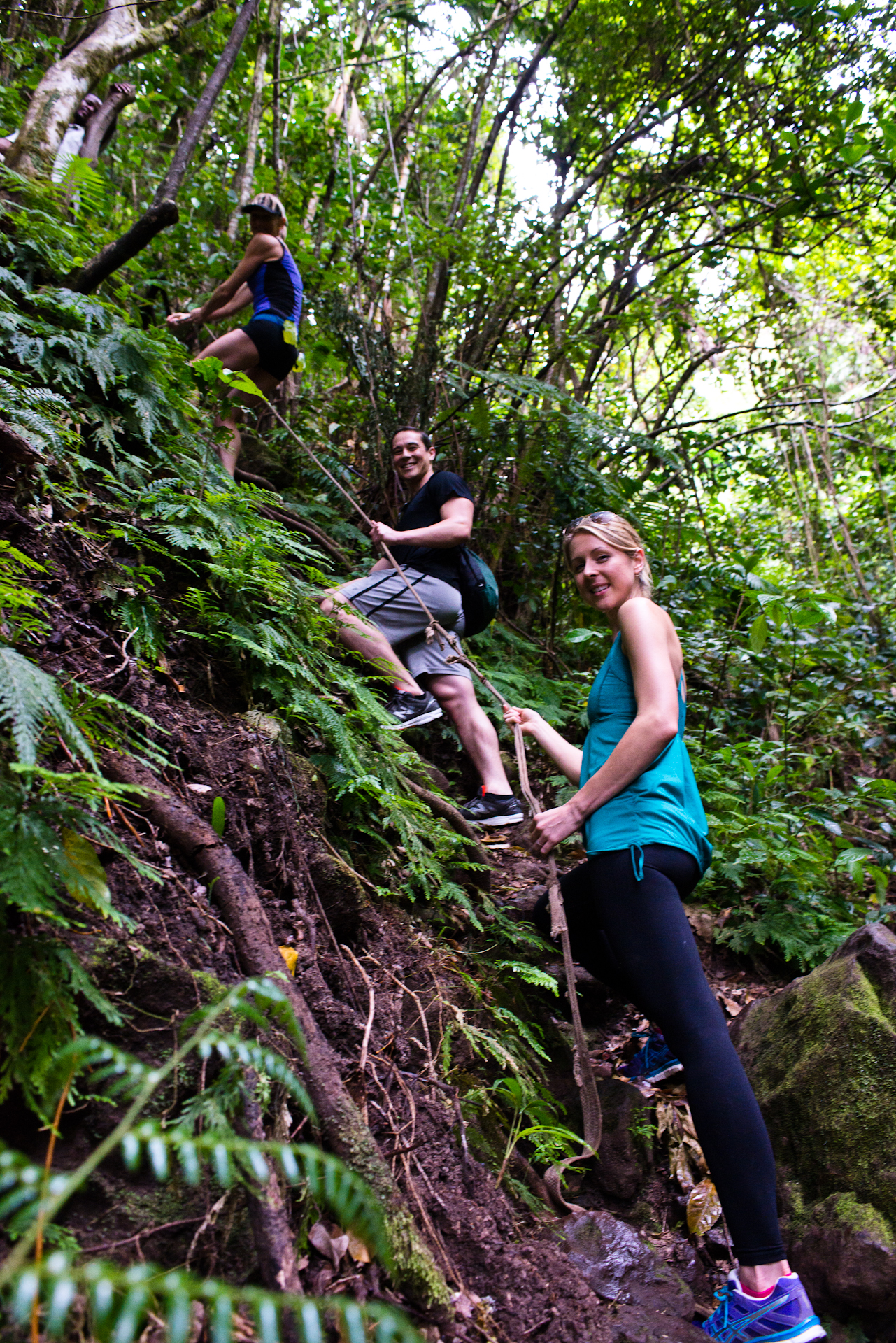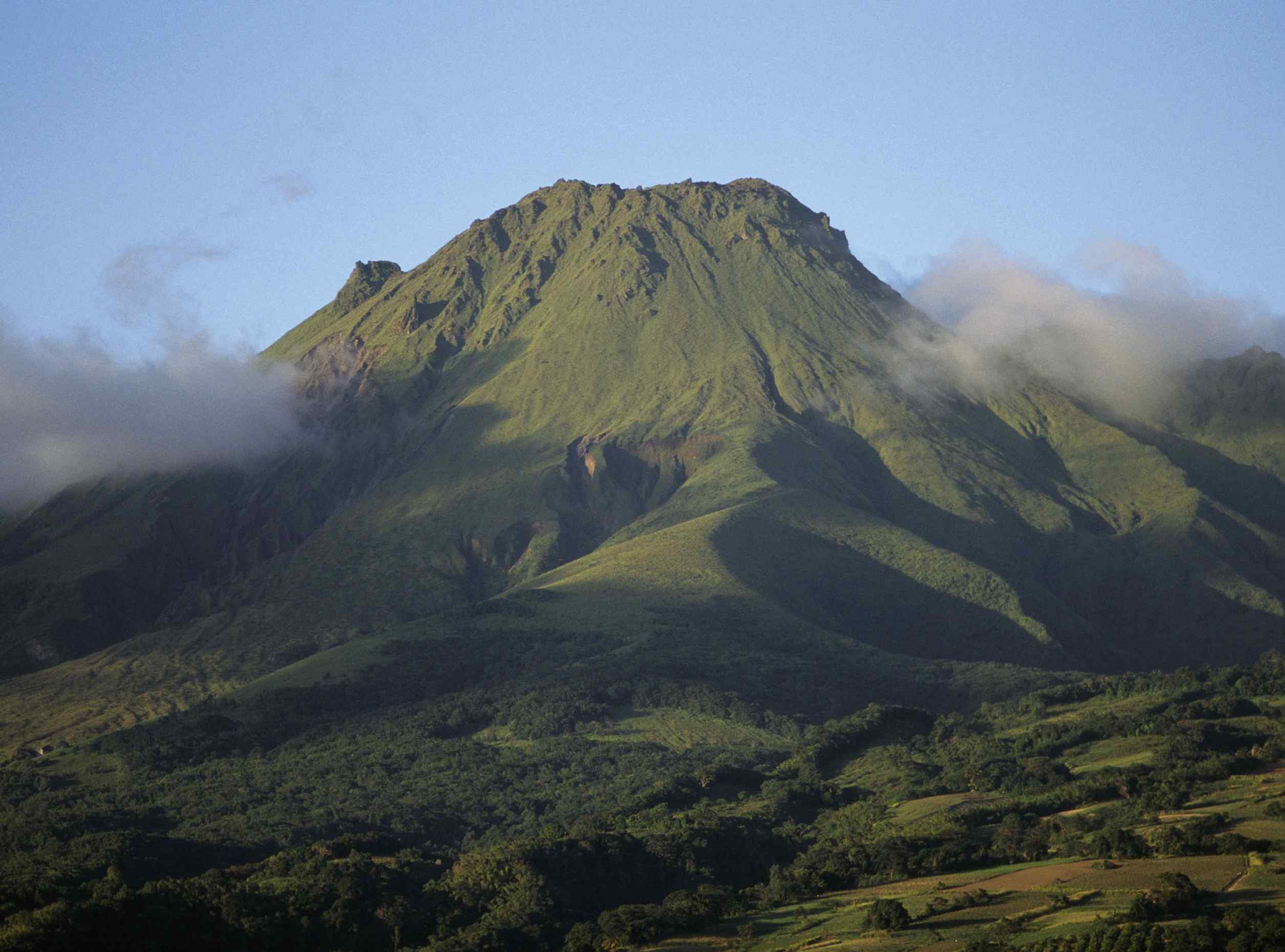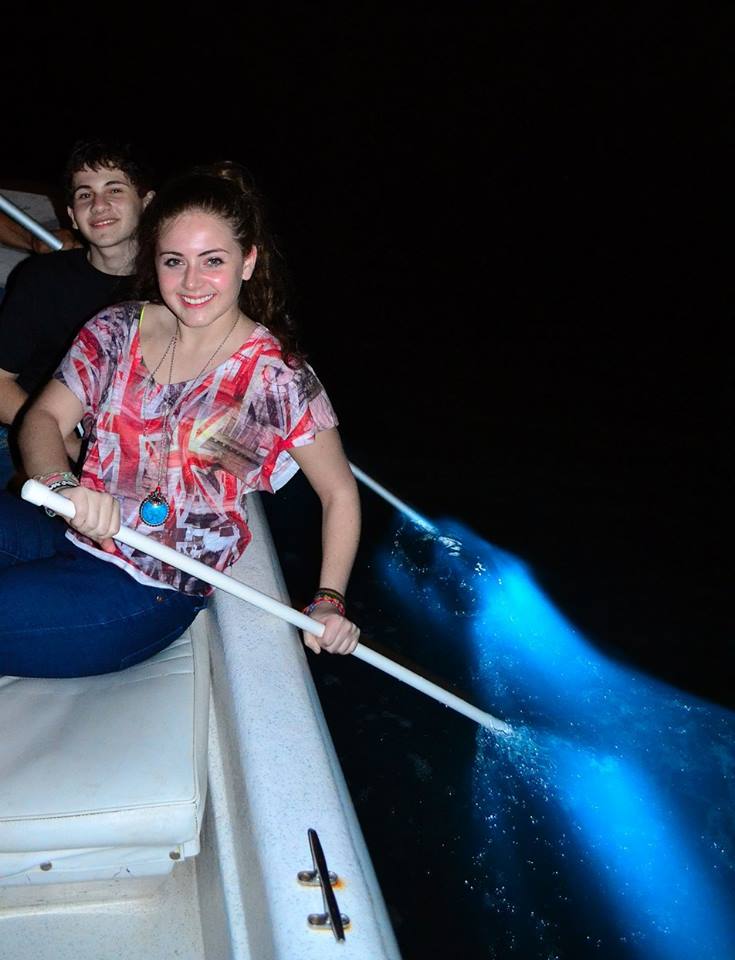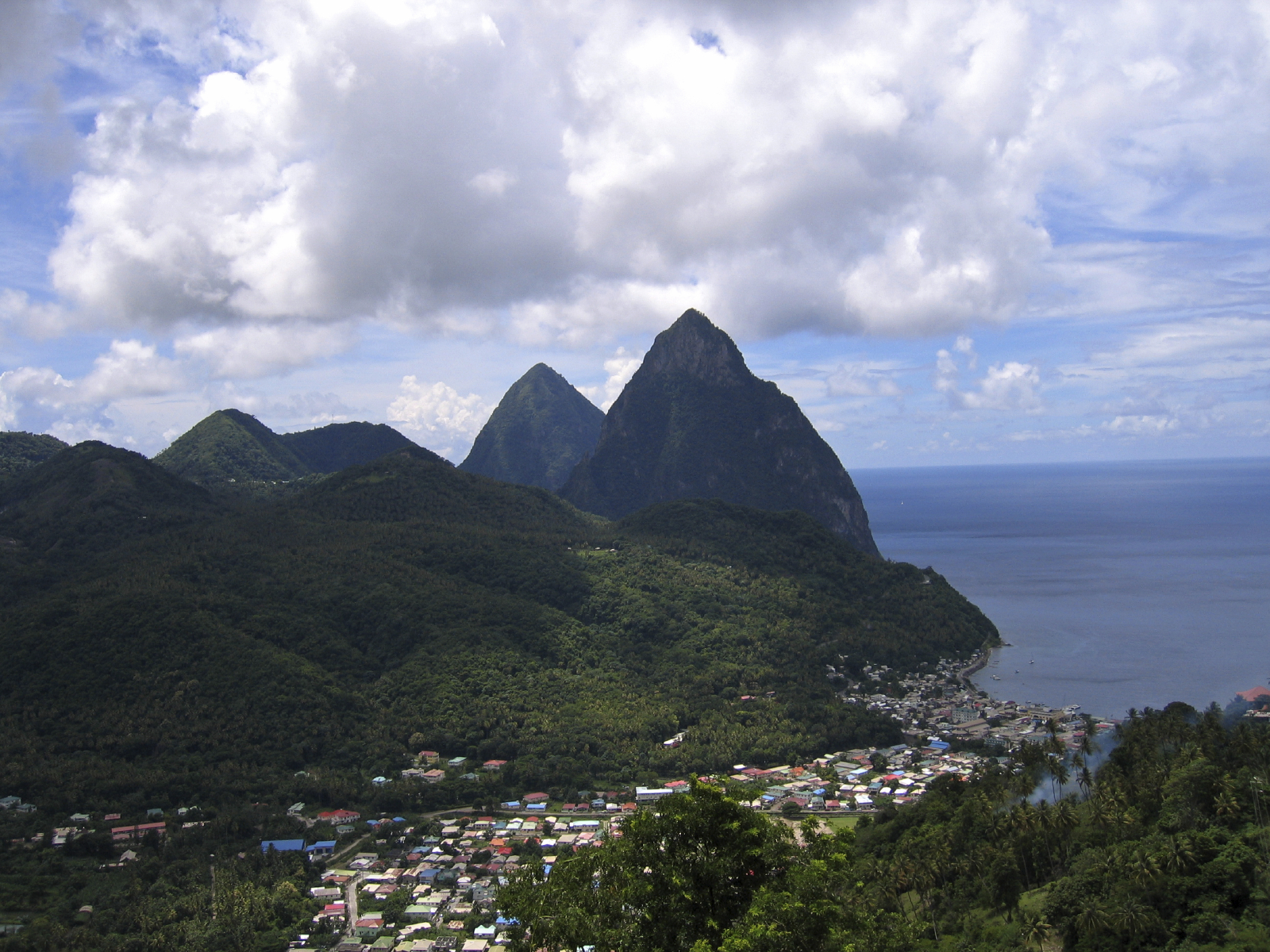Take a Walk on the Wild Side: The Caribbean Best for Nature-Loving Couples
By Melanie Reffes
Best known for the beaches, cocktails at sunset and couple-time in a swaying hammock, the many countries that make up the Caribbean are remarkably diverse with plenty of variety that is tempting for twosomes. Check out our nature island primer, leave the sun lounger on the sand and take your sweetie to the hills and the mountains, rainforests, gardens, bird sanctuaries and caves; you can always go back to the beach tomorrow.
Go Green in Grenada
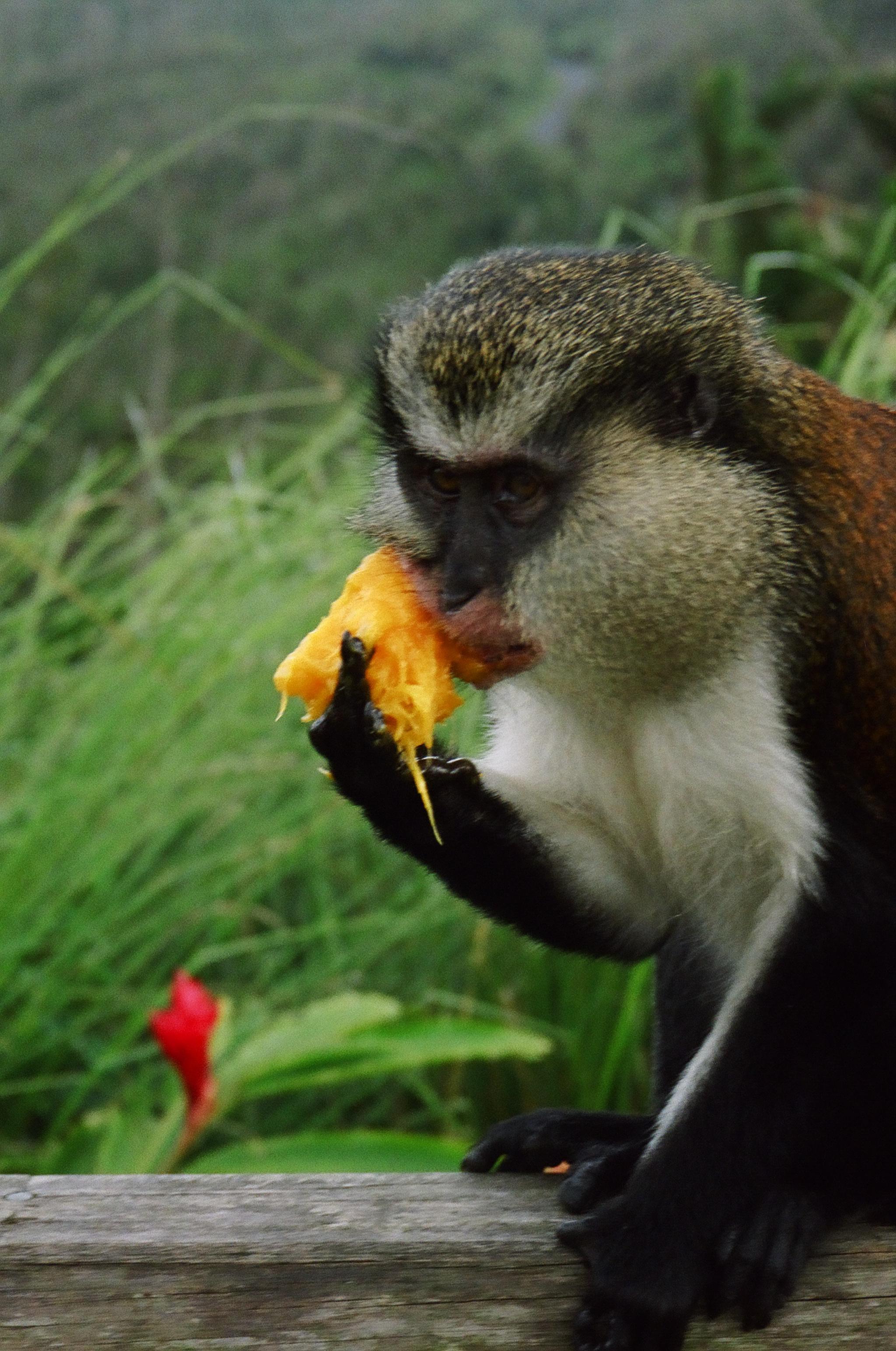
On a lunch break in Grenada’s Grand Etang park, monkeys are happy to pose for photos. Photo Credit Melanie Reffes
A siren’s call for adventure-lovers, Grenada is where you’ll find countless hiking trails, waterfalls and wildlife that live in the rainforest. On the Atlantic side, start at the La Sagesse Nature Center with nature trails that wind through steamy forests and windy hills. High up in the mountains, Grand Etang Forest Reserve is where to go for hiking, birdwatching, river tubing and meet and greets with critters like mongoose and Mona monkeys. A natural wonderland hosting four of the island’s tallest peaks and waterfalls that empty into pools for swimming, hikes range from an easy 30-minute jaunt to more rigorous treks that can take several hours. www.grenadagrenadines.com
To hike with the like-minded, Island Routes ‘Rainforest Hike Mount Qua Qua Tour’ is a good bet for unrivaled panoramas of the Atlantic Ocean and Caribbean Sea. With bottle water, sunscreen, insect repellent and snacks tucked inside a backpack, hands-free climbers snap photos of monkeys taking five and hummingbirds sipping nectar from the wild blossoms. http://islandroutes.com
Touring Tobago
Just north of Venezuela, Tobago is the more laid-back of the dual-island nation that includes Trinidad. On record as the ‘Western Hemisphere’s ‘oldest protected rain forest’, Tobago’s Main Ridge Forest Reserve covers two-thirds of the island and is home to nearly 300 species of rare bird like the Yellow Thrush and the Blue-backed Mankin. A mile from the northeast shore and even more laid-back than Tobago, Little Tobago was once home to a cotton plantation and today is one of the premier seabird sanctuaries in the Caribbean. For couples who enjoy bird watching, Peter Cox Wildlife Tours offers day trips to see dozens of nesting species that live on the 250-acre island. Equipped with spotting scopes and binoculars, guides accompany tourists on glass bottom boats that make the 20-minute trip across the Atlantic from the fishing village of Speyside.
Along the way, you’ll pass Goat Island where according to local legend the large white house that sits in the middle was the former home of Ian Fleming who wrote the James Bond spy thrillers. On dry land, tour-goers keep buy ativan 1mg their eyes peeled for green iguanas, leaf-toed geckos and colorful birds like Red-billed Tropics with their chalk-white feathers and Tropical Mockingbirds often heard singing in the night. Taking tourists on nature treks for more than 30 years, Peter Cox says his tour company upholds stringent eco-friendly standards, “Our guides do not use tape recorders and laser lights to call the animals as we pay very close attention to human impact on the island.” For those who like to eat local, make time on the way back for a stop at Jemma’s Seaview Treehouse Kitchen that was built in a treehouse and is island-famous for broiled lobsters and a wedge of the Chef’s Tobagonian mac ‘n cheese layered with slices of breadfruit. http://petercoxnaturetours.com/home/
Au Naturel in Nevis
For an exhilarating mountain high, Nevis Adventure Tours offers ‘Up and Down’ to Nevis Peak; an active volcano that stands proud at 3,232 feet above sea level. With a few challenging sections, the 4-5 hour trail travels up and down the same side of the slope with views on a clear day to Montserrat, St. Kitts and Antigua. For more experienced hikers, ‘Up and Over’ is a longer climb over the mountain and for history buffs, ‘Russell’s Rest Nature Hike’ is moderately challenging starting at the ruins of the 300-year old Russell Plantation and continuing on the Atlantic side through the rainforest that is home to monkeys, cocoa trees and waterfalls. www.nevisadventuretours.com/tours/
Catering to adventurers who like to be pampered, ‘Summit and Spa’ at the Four Seasons Resort Nevis starts with a hike to the top of Nevis Peak and wraps up with a fragrant massage that coddles the body with brown sugar, coconut and nutmeg. www.fourseasons.com/nevis. Early risers at the Nisbet Plantation Beach Club – and others who ask nicely- can tag along on the ‘GM Hike’ that sets foot at 7 a.m. The ‘General Manager’ and ‘Good Morning’ endorphin-pumper is a 5-mile loop up a gradual incline that passes through pastures humming with chickens, goats and donkeys. https://nisbetplantation.com
For the Birds in Anguilla
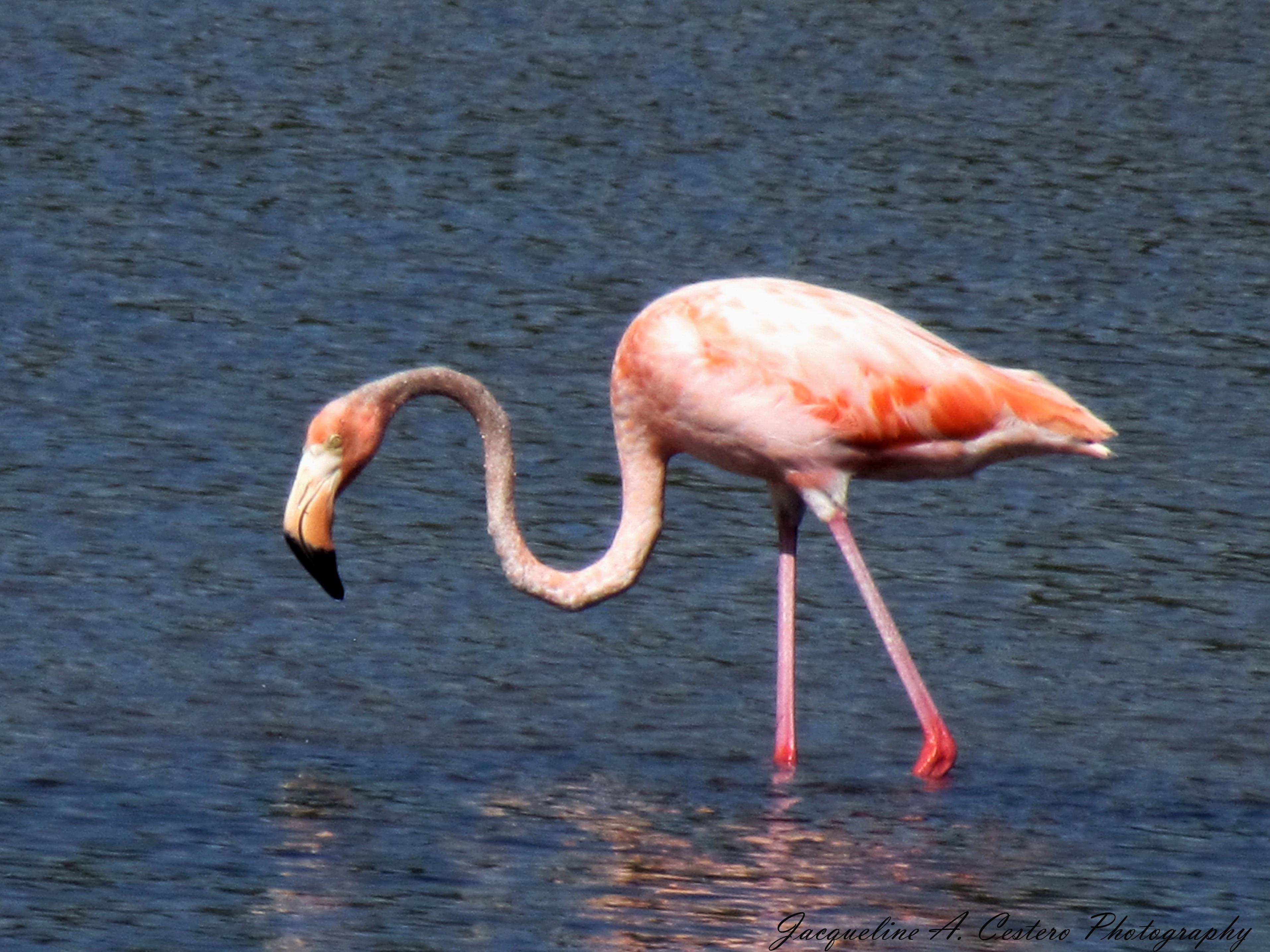
Anguilla’s elegant American Flamingo is a sight to behold. Photo Credit Jacqueline A Cestero Photography
Founded in 2010 by an American ex-pat who now calls the British island home, Nature Explorers Anguilla is the brainchild of avid birdwatcher and expert photographer Jacqueline Cestero who takes tourists beyond the beaches and swanky resorts. The first ecotourism company on the island, the most popular excursions are bird watching tours to the offshore cays and wetlands where Brown Boobies nest, Black-necked Stilts and Laughing Gulls breed and tour-goers keep their eyes open for pink flamingos and hummingbirds with unique spiky head feathers. “One of my favorite spots is Dog Island,” said Jacqueline Cestero, referring to the furthest outlying cay, “this is the ‘Galapagos of the Caribbean’ with nesting seabirds including 113,000 pairs of Sooty Terns.” In the wake of last year’s hurricane that took a toll on the islands natural resources, Nature Explorers Anguilla is donating all proceeds from its 2018 tours. “I will derive no income from the tours this year, all will go towards mangrove restoration on the western end of the island,” adds Jacqueline Cestero. www.natureexplorersanguilla.com
Caving in Curacao

Curacao’s Blue Room is an underwater cave seen nowhere else in the Caribbean. Photo Credit Curac?ao Tourist Board
While many nature buffs prefer to get their fix above ground, exploring a cave is just as exciting. A hidden treasure on the west coast, Blue Room is an underwater cave accessible only through a narrow opening. Popular with snorkelers and scuba divers, the dome half-filled with clear water is a kaleidoscope of various shades of blue and green and the go-to for cavorting with schools of glassy-eyed sweeper fish. On the eastern side of the island, Bika’s Caverns are home to bats although they prefer to flutter near the top of the caves that are separated by pockets of sunlight. Tours traverse the caves and to the lookout with mesmerizing 360 degree views of the island. Asked to explain the name of the caves, Terence Ching, project coordinator at Stichting Uniek, a group that protects the island’s environment likes to quote local lore, “it is said that Bika, a female slave, was the paramour of the land owner and after he passed away he left the land in her name.” www.curacao.com/en/
Ooh-la-la Martinique
A world away from the beaches and the baguettes, the petite French isle, just over 4 hours by plane from New York, is a treasure trove of natural wonders bordering the Atlantic Ocean to the east and the Caribbean Sea to the west. Nicknamed the ‘Isle of Flowers’, fans of bright blooms make a beeline for the Jardin de Balata; a short drive from the capital city of Fort-de-France. www.jardindebalata.fr/welcome
To see the biggest and oldest tree in the Lesser Antilles, head to Habitation Céron, also called the ‘Remarkable Garden’, where you’ll find a three-century-old Zamana tree with branches that span the distance of a city block. To hang with hip tourists from France, Les Trois-Ilets is a small town popular for forest walks, Sunday picnics and exploring the mangroves on a kayak. It’s also the birthplace of Joséphine, Napoléon, Bonaparte’s first wife, and where you’ll find her childhood mementos and a love letter written by Napoléon at the Pagerie Museum.
And there’s the mountain. Rising to nearly 4,600 feet above sea level, Mount Pelée is an active volcano that blew its top in 1902 blanketing the city of St. Pierre in a veil of toxic ash. Named for the French words for ‘bald mountain’, hiking the steep cloud-shrouded hill via one of 3 trails takes a lot of fortitude and although you can climb on your own, an escorted trek is recommended. http://us.martinique.org
Glowing in Puerto Rico
It is a mystical glow-in-the-dark experience seen in only five bioluminescent bays in the world: one in Jamaica, one in Vietnam and 3 in Puerto Rico; Laguna Grande, La Parguera and Mosquito Bay. Courtesy of millions of microscopic marine organisms that light up when they’re touched, the water looks a giant glow stick especially dramatic from a kayak when your hands touch the waves surrounding the boat. With every stroke of a paddle, swirls of color with lots of blue-green lights sparkle in the dark. Specializing in day trips, San Juan-based PR Fun Tours offers a 2-hour Bioluminescent Bay Kayak Tour to Laguna Grande. Under the watchful eyes of trained guides, two-person glass-bottom kayaks – perfect for couples – enter through a mangrove that is part of the Cabezas de San Juan Nature Reserve in Fajardo on the northeast coast. “Very few people, even Puerto Ricans, are aware of our little known, bioluminescent lagoon,” said Erik Moccabee, owner, PR Fun Tours, “it’s best to go on a moonless night when we cover the kayaks with giant canvas tarps to block out any light including that coming from the bright stars.” https://funtourspr.com
Snaking around Saint Lucia
With vistas only a handful of locales can rival, ascending to the top of Gros Piton at 2,619 feet above sea level is a bucket list mainstay and although there are plenty of guides to take you there, it’s the nature-path-less-traveled on the southeast coast that is worth checking out. One of the islands national treasures, Maria Islands is accessible only to visitors who arrange a tour with the National Trust. Solo excursions are not allowed.
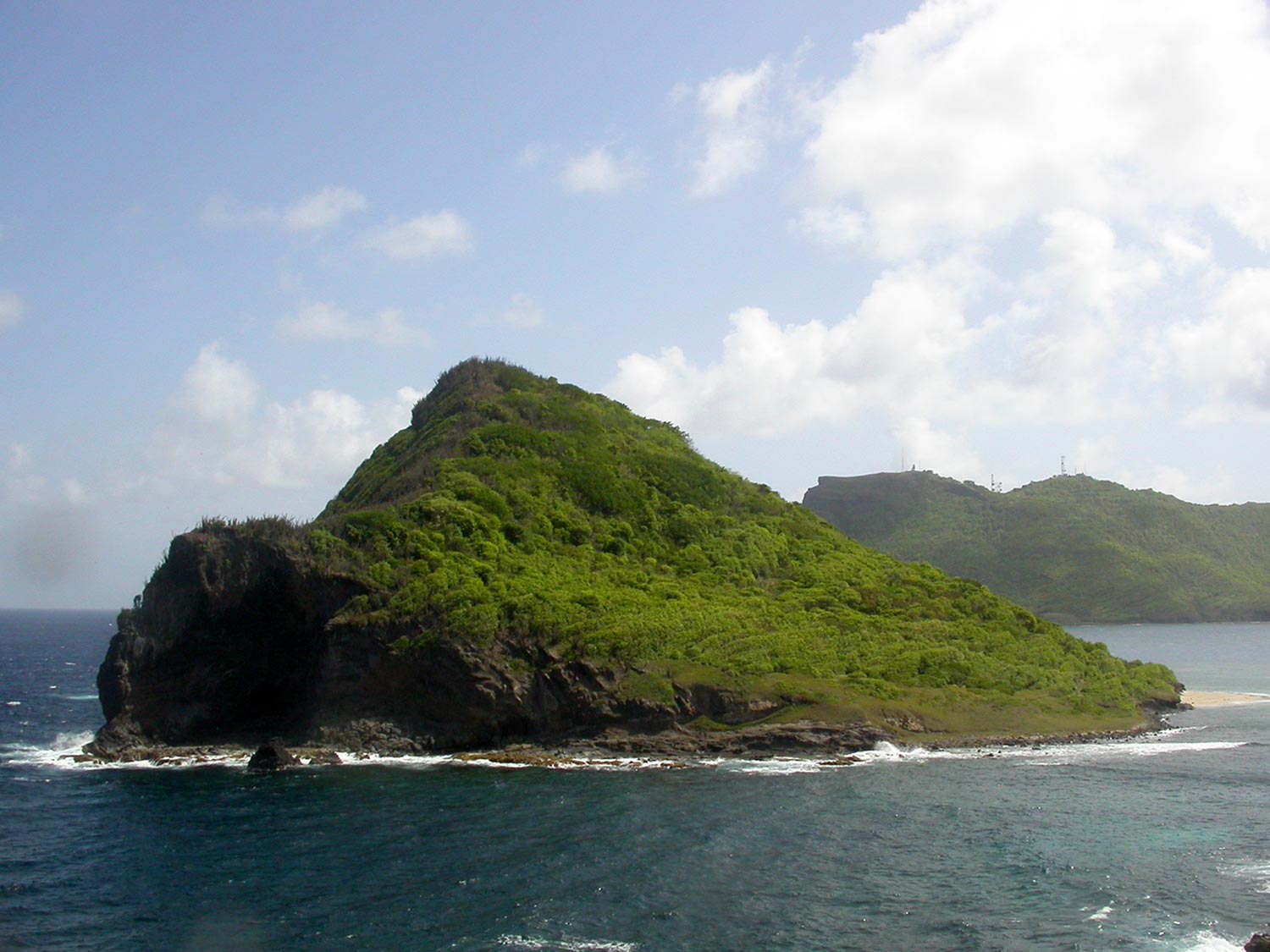
Maria Major is St. Lucia is the larger of the Maria Islands. Photo Credit Currell Wildlife Conservation Trust
Less than a mile from Pointe Sable, the twin islands (25-acre Maria Major and 4-acre Maria Minor) is a protected ecosystem 20 minutes by boat from the shore. As un-touristy as it gets with no frills and no amenities, tour-goers are encouraged to pack their own picnic lunch, sunscreen and snorkel gear. Not for the squeamish, the islands are also home to creepy crawlers like the world’s rarest snake called the Saint Lucia Racer that slithers between the rock crevices and the Whiptail lizard with its speckled blue tail. www.stlucia.org/


